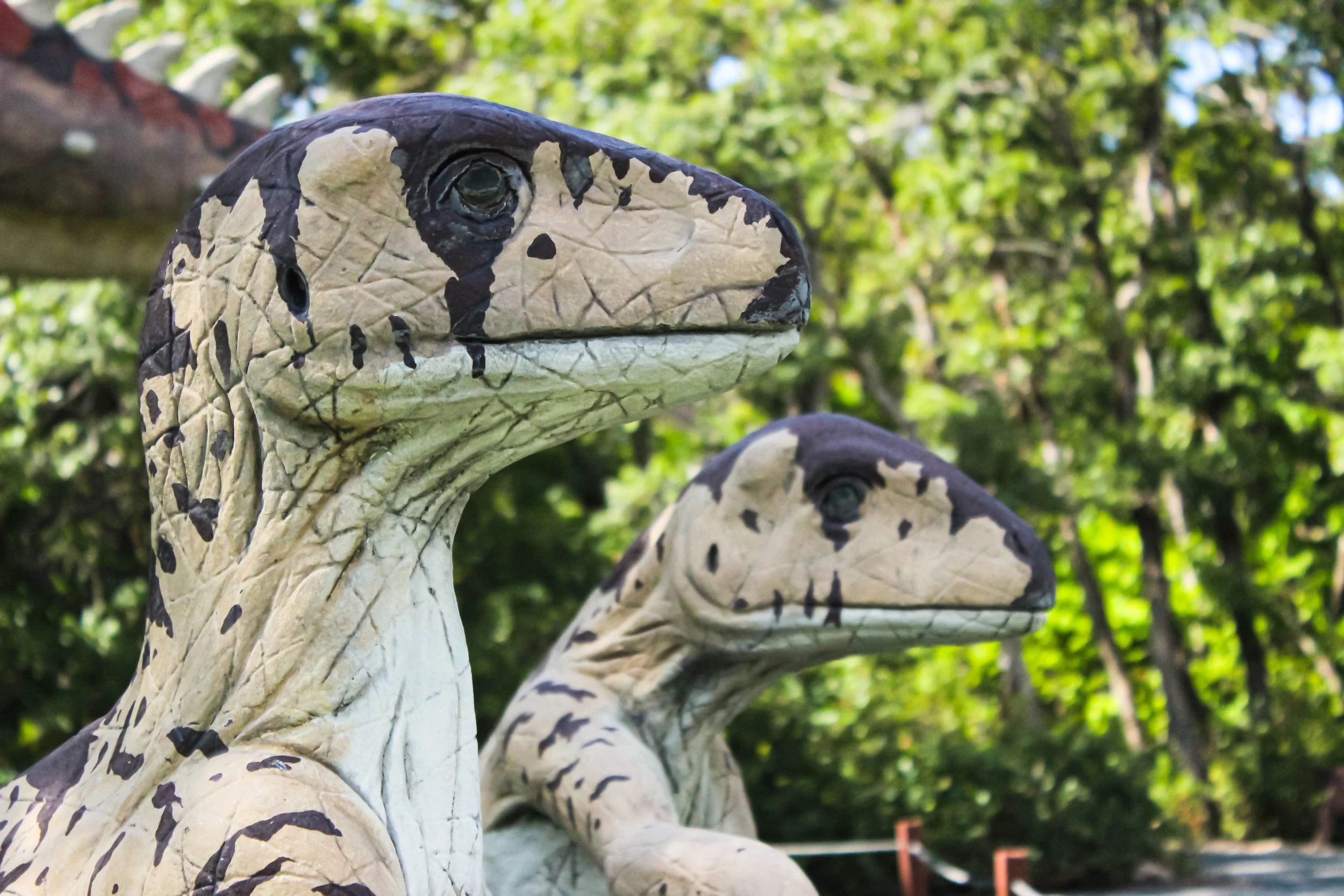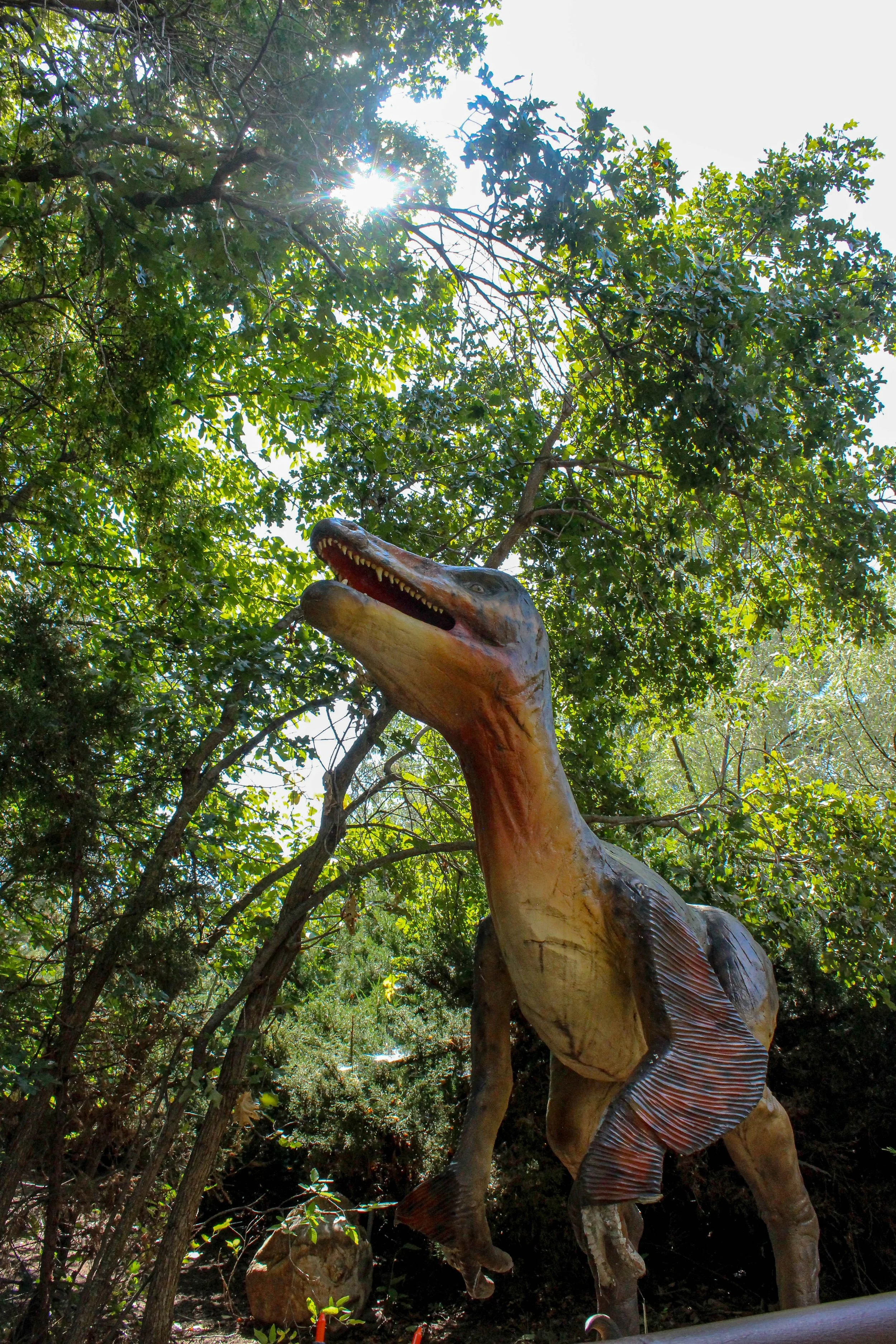Change your view
I recently visited the George Eccles Dinosaur Park in Ogden, Utah. It has been a longtime favorite space for me to go, featuring dozens of life sized dinosaur statues. I have photographed them dozens of times, but I wanted to try something different. This time, I wanted to photograph them not as I would a statue, but asked how I would photograph them as if I were photographing them in nature. What angles would make them more dynamic? What stories or feelings could I convey? How could I portray them without stepping off of the path?
As I started in the main museum, I was passing underneath the skeleton of a Torvosaurus. At one precise angle, the ceiling light shone through the holes where the eye sockets were located. Carefully positioning my camera, I was able to line up the shot and give an eerie ghost-like feel with an illuminated eye. Rather than an empty skull, this gave an illusion that the spirit of the animal was still present within the bones.
While going through the park itself, several opportunities presented themselves. Why should I photograph just individual statues? Shouldn’t I show more of the environment? How should I convey the statues as creatures? I adjusted my angle, looking not only at the dinosaur statue in front of me, but also the surrounding statues and those in the background. My first opportunity came with a smaller dinosaur with two Ceolophysis in the background.
By positioning myself lower, directly in front of the closest statue, I positioned myself so that it appeared to be fleeing the two predators just making themselves over the rise of the hill. This added an element of excitement, giving a more lifelike appearance rather than static statues, it almost made them feel alive.
Another opportunity presented itself as I traversed deeper into the park. After a few individual photographs of the green Allosaurus, I made my way around the trail and toward an Ankylosaurus statue. A few individual shots of that, and I noticed the framing of the Allosaurus in the background could be used to my advantage. Despite living in different eras, I believe the image worked well. Here, I found that the Allosaurus, camouflaged green within the trees, was stalking its prey. The Ankylosaurus, sensing danger, sinks low with its clubbed tail at the ready should any aggression occur. An ominous predator in the background with the cautious prey up front.
While the park takes pride with the accurate dinosaur statues, several remain outdated. And while Deinonychus is indeed my favorite dinosaur, I always shake my head when I pass by a duo in a grossly outdated position that appear more like monkeys. With upright positions and oversized arms and hands, I couldn’t help but feel a degree of stress trying to make them look good. Alas, I did remember the original “Walking with Dinosaurs” documentary where two Utahraptors entered the shot. First one, then another with the focus shifting. Focusing on the heads rather than the entire body, I was able to capture the next image. Upon showing it to the park’s main educator, he commented that he did not think anything would make those two statues look good, and yet my image managed to pull it off. A great compliment, and worthwhile experience.
A final image, I got low. Very low. Being just after noon, I found myself passing by another Raptor with the sunlight passing through the trees above. It was an opportunity I could not pass up, seeing as the sun would move from that position and I would not be able to return later in the day for the same effect. The low angle conveyed a sense of power and authority that the Raptor held, while maintaining the state of awe of a creature approaching from a bygone era.




